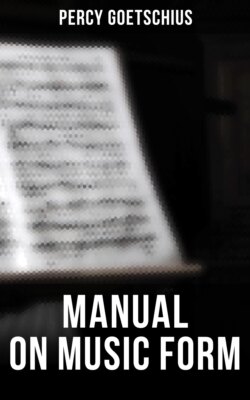Читать книгу Manual on Music Form - Percy Goetschius - Страница 6
На сайте Литреса книга снята с продажи.
[Illustration: second fragment of 8th Song]
ОглавлениеTable of Contents
run through the whole number.
(5) The specific figure of the accompaniment is usually reproduced from measure to measure (or group to group) throughout whole sections of the piece. Observe, in the 37th Song Without Words, how constantly the ascending figure of six tones recurs in the lower part (left hand). Glance also at No. 30; No. 1; No. 25. Many other evidences of Unity are invariably present in good music, so naturally and self-evidently that they almost escape our notice. Some of these are left to the student's discernment; others will engage our joint attention in due time.
In every one of these manifestations of unity there lies the germ of the principle of Variety, which quickens into life with the action of the former, always following, as offspring and consequence of the primary unity. Thus:—
(1) The beats, though uniform in duration, differ from each other in force. The first pulse in each measure (or metric group of any size) is heavier, stronger, than the following. It—the first—is the "impulse," and is what is called the accent. This dynamic distinction it is that gives rise to the two fundamental classes of rhythm, the duple and triple. In duple rhythm the accent is followed by one unaccented or lighter beat, so that regular alternation of heavy and light pulses prevails incessantly. In triple rhythm the accent is followed by two lighter beats, creating similarly constant, but irregular alternation of heavy and light pulses.
